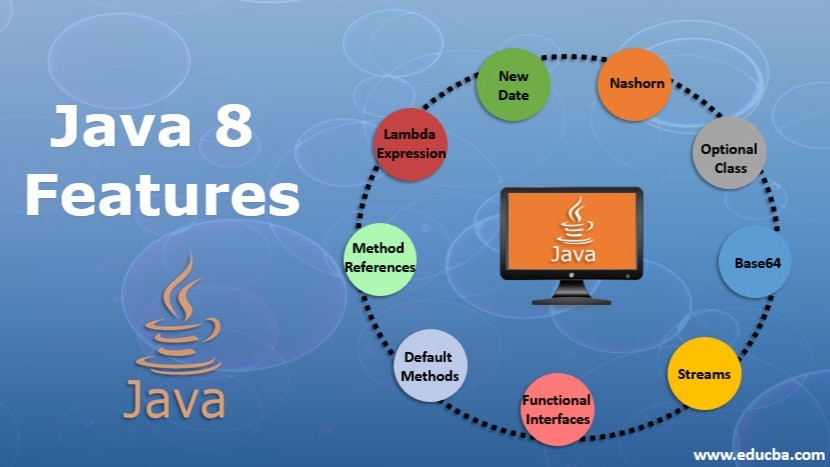
Exploring Java 8 Lambda Expressions: A Key Feature of Modern Java
Rizwana K.
Experienced Software Engineer | Designing scalable backend systems | Developing RESTful web services | SDLC, Agile | Java/J2EE, Springboot, Microservices | API Development | UI with Angular | Database Management |
Java 8 introduced several new features that revolutionized how Java developers write code, and one of the most significant of these is lambda expressions. Lambda expressions provide a powerful way to write cleaner, more concise code, especially when working with functional interfaces, collections, and streams.
What is a Lambda Expression?
A lambda expression is essentially a function that can be treated as an instance of a functional interface. In Java, functions are usually bound to objects, but with lambda expressions, you can pass behavior (functions) as parameters, simplifying code for certain tasks, especially when working with collections and streams.
Before Java 8, anonymous inner classes were used to implement functional interfaces, but they were often verbose and hard to read. Lambda expressions solve this problem by providing a shorthand for creating instances of functional interfaces in a more readable way.
Basic Syntax of a Lambda Expression
The syntax of a lambda expression is straightforward:
?(parameters) -> expression
or
?(parameters) -> { statements }
Components of a Lambda Expression:
Parameters: The input parameters of the function, defined within parentheses. If there’s only one parameter, you can omit the parentheses.
Example: x -> x * x (a function that squares a number)
Arrow Token (->): This separates the parameters from the body of the lambda expression.
Body: The logic or statements that the lambda expression will execute. If it’s a single expression, you don’t need to wrap it in curly braces. For multiple statements, use curly braces {}.
Functional Interfaces
Lambda expressions in Java require a functional interface. A functional interface is an interface that contains exactly one abstract method. Java 8 introduced the @FunctionalInterface annotation to enforce this rule. Examples of functional interfaces include Runnable, Callable, Comparator, and interfaces in the java.util.function package.
Here’s an example of a functional interface:
@FunctionalInterface
interface MyFunctionalInterface {
??? void execute();
}
A lambda expression can be used to provide the implementation for this interface:
MyFunctionalInterface myLambda = () -> System.out.println("Lambda Expression Executed!");
myLambda.execute();
Lambda Expressions in Action
1. Using Lambda with Collections
Before Java 8, sorting a list of strings in reverse alphabetical order required verbose code:
List<String> names = Arrays.asList("Alice", "Bob", "Charlie");
Collections.sort(names, new Comparator<String>() {
??? @Override
??? public int compare(String o1, String o2) {
??????? return o2.compareTo(o1);
??? }
});
With lambda expressions, the same sorting task can be written in a much more concise way:
List<String> names = Arrays.asList("Alice", "Bob", "Charlie");
names.sort((o1, o2) -> o2.compareTo(o1));
2. Using Lambda with Streams
Java 8 introduced the Stream API, which allows functional-style operations on collections. Lambda expressions play a key role when working with streams.
For example, filtering and printing even numbers from a list:
List<Integer> numbers = Arrays.asList(1, 2, 3, 4, 5, 6);
?????? .filter(n -> n % 2 == 0)
?????? .forEach(System.out::println);
The code is concise, and the lambda expression n -> n % 2 == 0 filters out even numbers, while System.out::println is a method reference that prints each number.
Lambda Expressions with Functional Interfaces from java.util.function
The java.util.function package introduced several predefined functional interfaces that work seamlessly with lambda expressions:
1. Predicate Interface
The Predicate<T> interface takes an object of type T and returns a boolean. It's often used for filtering collections.
Predicate<Integer> isEven = n -> n % 2 == 0;
System.out.println(isEven.test(4)); // Output: true
2. Function Interface
The Function<T, R> interface represents a function that accepts one argument and produces a result of type R.
Function<String, Integer> lengthFunction = str -> str.length();
System.out.println(lengthFunction.apply("Lambda")); // Output: 6
3. Supplier Interface
The Supplier<T> interface does not take any input but returns an object of type T. It is useful when you need to generate or supply values.
Supplier<Double> randomSupplier = () -> Math.random();
System.out.println(randomSupplier.get()); // Output: Random number
4. Consumer Interface
The Consumer<T> interface represents an operation that takes a single input but does not return any result. It's typically used to perform side-effects such as printing values.
Consumer<String> printer = message -> System.out.println(message);
printer.accept("Hello, Lambda!"); // Output: Hello, Lambda!
Method References
In addition to lambda expressions, Java 8 introduced method references, a shorthand for calling methods directly. Method references are closely related to lambda expressions and can be used to call existing methods by their names.
Syntax:
Class::methodName
For example, instead of using a lambda expression to print elements of a list:
numbers.forEach(n -> System.out.println(n));
You can use a method reference:
numbers.forEach(System.out::println);
Advantages of Using Lambda Expressions
Limitations of Lambda Expressions
Conclusion
Lambda expressions are a major enhancement in Java 8, allowing developers to write cleaner and more concise code. By leveraging lambda expressions and functional interfaces, you can significantly reduce boilerplate code and improve the readability of your applications. Whether you're working with collections, streams, or asynchronous tasks, lambda expressions simplify how you interact with Java’s API.